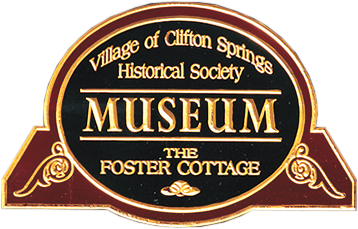Prehistoric Iroquois Settlement, Excavation at the Clifton Springs Site.
Part 2
Houses
As will be seen from the accompanying map, our excavations revealed an almost bewildering number of post molds. This indicates a lengthy
occupation, with numerous repairs of structures and, at least in the portion of the village we excavated, a phase of complete rebuilding. It is of
note that the hillside middens , which in places reached a depth o f almost three feet, indicate a long occupation.
The most clearly discernable house pattern has been labeled House 1on the accompanying map. It measures 17 feet wide by at least 30 feet long and runs
in a NW-SE direction. Two hearths ( features 3 and 16 ) are located in the center of the house.
Feature 1, a large post mold 6 inches wide and 29 inches deep, and near the center of the house, is probably a major roof support post. Though because
of our limited time we were unable to completely excavate the length of this structure, its oblong floor plan, center-line hearths, indicates a house
conforming to the basic longhouse type.
What is probably a rebuilding of house 1, or the predecessor of house 1, is indicated on the map by "House. 2”. It consists of a general line of post
molds running almost exactly parallel to House 1, but about 10 feet to the southwest. Two hearths, features 4 and 15, could have been central fireplaces,
as they are located 7- 9 feet from the line of post molds which would represent the southwest wall of House 2. The fact that feature 4, a large and
apparently long-used hearth, lies along the southwest wall of House 1, is clear evidence for a phase of rebuilding.
"Structure A" on the map is uncertain. I have indicated a possible round structure approximately 10 feet in diameter. The general maize of post molds
in this portion of the site makes the identification of structure “A” questionable, but I suggest it on the basis of the similarity in diameter and
color of the post molds which in general were slightly larger and darker than the surrounding molds, suggesting a series of posts that were either
removed simultaneously or decayed under similar conditions. The absence of a hearth within this possible structure suggests a storage facility, which
is in keeping with the fact that at some time during the village occupation, this portion of the site was indeed set aside for storage, as is indicated
by the presence of large storage pits, features 10 - 13.

